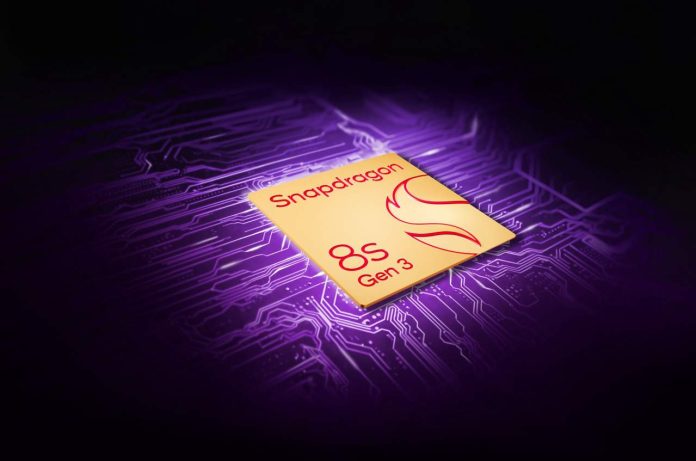[ad_1]
Besides powering the top-of-the-line flagship Android phones, Qualcomm recently has also begun to focus on the mid-range segment. A result of it is a near-flagship performance in the mid-range segment. The Snapdragon 8s Gen 3 is a perfect example of this.
Now it turns out that the Snapdragon 8s Gen 3 not only replicates a flagship-level performance, but it also boasts the same cores (building blocks of a CPU) as the current and most powerful flagship chip from Qualcomm, the Snapdragon 8 Gen 3.
Snapdragon 8s Gen 3 is nearly 35% smaller than its flagship counterpart
Chinese media outlet ITHome has compared the dimensions of the Snapdragon 8s Gen and the flagship Snapdragon 8 Gen 3. Those are 8.40×10.66mm and 10.71×12.81mm for the two respectively. It means that the ‘s’ branded new mid-range chip is approximately 34.73% smaller than the flagship silicon.
Notably, the smaller size also indicates some sacrifices in the components of the chip. The sacrifices for the Snapdragon 8s Gen 3 as compared to its more expensive version include a smaller 1MB L2 Cache for the prime Cortex-X4 core, as opposed to the 2MB one on the more expensive chip. The Cortex-A720 performance core is also reduced from 512KB to 256 KB. The L3 cache and SLC cache have also undergone similar reductions.
The primary function of the cache memory is to temporarily store frequently accessed data and instructions, helping to reduce the time it takes for the CPU to access them from the slower main memory (RAM). This results in faster data retrieval and improved overall system performance. A smaller L3 and SLC cache means technically slower execution of tasks in certain scenarios.
Both the chips equip the same cores with different frequencies
Both the chips are fabricated on TSMC’s 4nm process node. The CPU of the Snapdragon 8 Gen 3 consists of 1 x 3.3GHz Cortex-X4 (prime core), 3 x 3.15 GHz Cortex-A720 and 2 x 2.96GHz Cortex-A720 (performance core), and 2 x 2.26GHz Cortex-A520 (efficiency core).
In comparison, the smaller sibling equips the same cores with reduced peak frequencies – 1 x 3GHz Cortex-X4 (prime core), 4 x 2.8 GHz Cortex-A720 (performance core), and 4 x 2GHz Cortex-A520 (efficiency core).
The Snapdragon 8s Gen3 supports up to 4200MHz LPDDR5X memory, and the Snapdragon 8 Gen3 supports 4800MHz LPDDR5X memory. While the ISP of the new mid-range chip supports up to 4K HDR video recording, its bigger sibling can go up to 8K on the same.
In terms of communication, the smaller chip equips the X70 baseband and supports 5000Mbps downlink and 3500Mbps uplink. In comparison, the Snapdragon 8 Gen 3 boasts the X75 baseband, which enables double the downlink capability of the ‘s’ branded chip.
Nonetheless, the ‘s’ branded chip is a lot less expensive and offers these capabilities to a mid-range device instead of a flagship, which justifies all the sacrifices.
[ad_2]
Source link
